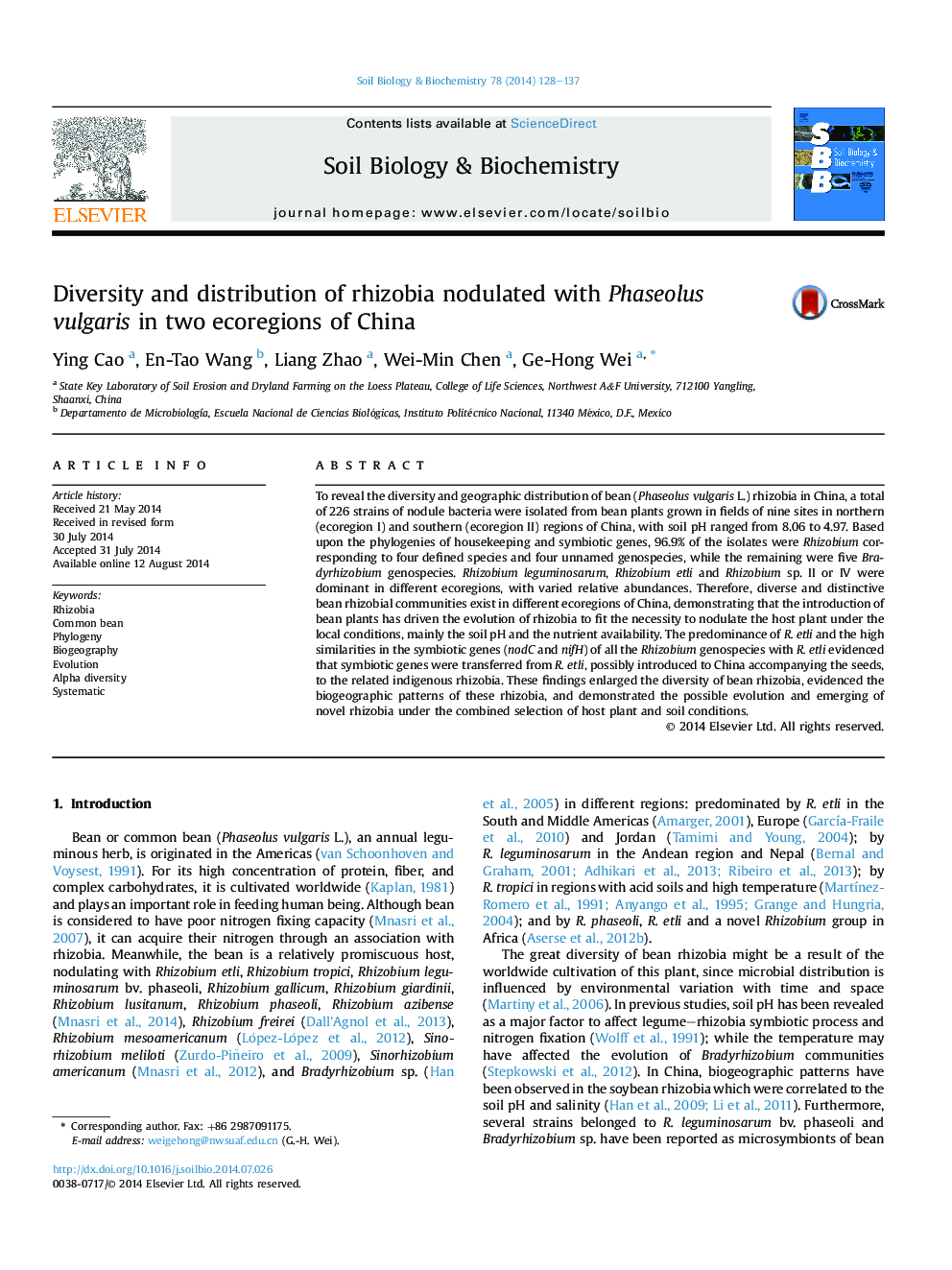| Article ID | Journal | Published Year | Pages | File Type |
|---|---|---|---|---|
| 2024578 | Soil Biology and Biochemistry | 2014 | 10 Pages |
•All isolates belong to Rhizobium and Bradyrhizobium.•Distinct rhizobial communities existed in different ecoregions.•Rhizobium etli from China and the Americas had high similarities in the symbiotic genes.•Soil pH influenced the composition of rhizobial communities.
To reveal the diversity and geographic distribution of bean (Phaseolus vulgaris L.) rhizobia in China, a total of 226 strains of nodule bacteria were isolated from bean plants grown in fields of nine sites in northern (ecoregion I) and southern (ecoregion II) regions of China, with soil pH ranged from 8.06 to 4.97. Based upon the phylogenies of housekeeping and symbiotic genes, 96.9% of the isolates were Rhizobium corresponding to four defined species and four unnamed genospecies, while the remaining were five Bradyrhizobium genospecies. Rhizobium leguminosarum, Rhizobium etli and Rhizobium sp. II or IV were dominant in different ecoregions, with varied relative abundances. Therefore, diverse and distinctive bean rhizobial communities exist in different ecoregions of China, demonstrating that the introduction of bean plants has driven the evolution of rhizobia to fit the necessity to nodulate the host plant under the local conditions, mainly the soil pH and the nutrient availability. The predominance of R. etli and the high similarities in the symbiotic genes (nodC and nifH) of all the Rhizobium genospecies with R. etli evidenced that symbiotic genes were transferred from R. etli, possibly introduced to China accompanying the seeds, to the related indigenous rhizobia. These findings enlarged the diversity of bean rhizobia, evidenced the biogeographic patterns of these rhizobia, and demonstrated the possible evolution and emerging of novel rhizobia under the combined selection of host plant and soil conditions.
